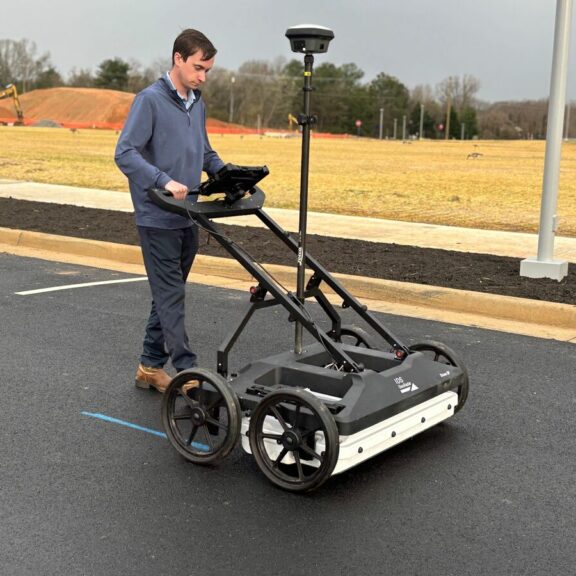At Timmons Group, safety is a big priority for our employees. Because we’re invested in our employees’ heads, shoulders, knees, and toes, it’s important that they wear the correct personal protective equipment for the job to avoid unnecessary risk of injury.
Personal protective equipment (PPE) is clothing and equipment that is worn to provide protection against hazardous environments. This includes hard hats, hearing protection, safety glasses, visibility vests, protective gloves, and safety-toed shoes.
Timmons Group’s corporate safety manager, Jim Evans, explains proper PPE protocols to us. Along with a variety of OSHA certifications, Jim is also certified in DOT Hazmat Compliance and SMITH System Driving Instruction.
Hard Hat Quick Hitters
The suspensions straps of a hard hat should be adjusted for your head. There should be about an inch and a half to two inches of gap between the shell and the suspensions strapping. The gap helps absorb shock and redirect impact force away from the head and spine.
Hard hats are only good for several years after the date of manufacture. In order to test a hard hat, you must test the flection. Push in on the hard hat, and it should return to its natural shape. If the hard hat seems brittle or cracks, it’s past its probably time for a new one.
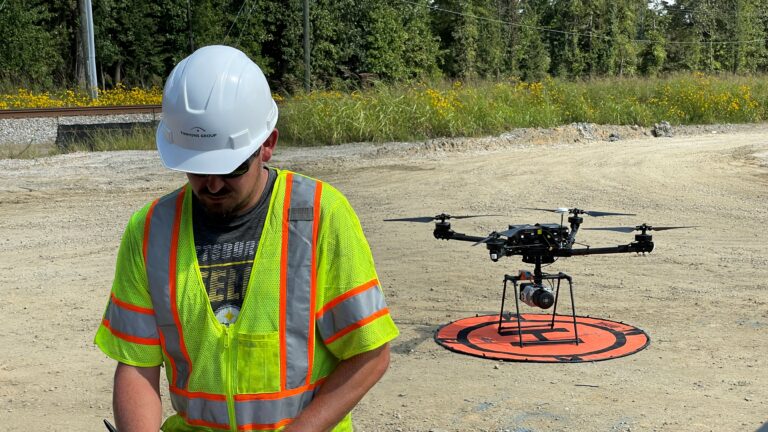
Let’s Hear It for Protection
The most important thing to remember is that if you lose your hearing, you won’t get it back. It’s important to take steps to prevent hearing loss while on the job. Understanding how and when to use hearing protection is the first step. If you’re in a high noise environment above 104 decibels you need both earplugs and earmuffs. 104 decibels can be compared to a car horn, so if you plan on standing in front of a car blaring its horn for more than 30 minutes, you’ll probably want to have hearing protection.
Here’s Jim’s step-by-step guide on the proper way to wear earplugs to promote hearing safety: “roll the earplug between your thumb and forefinger, reach around with your other hand and pull your earlobe up and back—this will align the ear canal—then, insert the earplug holding it into place allowing it to expand, and let go.” Doing this will allow the earplugs to work to their full potential and help prevent any unnecessary hearing loss.
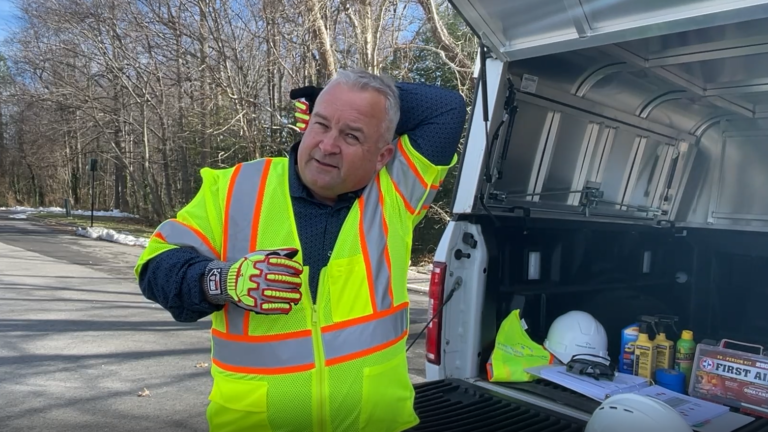
Eye Spy Safety Glasses
Safety glasses provide protection from particles, such as wood, dust, dirt, chemicals, and UV light exposure. The key components of safety glasses are a scratch-resistant lens and a side shield feature. Some of the side shields are wrap-around, while others have more of a defined side shield built into them. For outdoor tasks, tinted safety glasses are safer and more helpful. However, clear safety glasses are more appropriate if you’re transitioning from inside to outside.

Don’t Be Shy, Show Off Your Vest
There are three different classes for vests: Class one, class two, and class three. Class one vests are rated for 25 miles per hour roads or off-road use and they’re only allowed to be worn during the day. These could include high-visibility shirts that you sometimes see the trades wearing. Class one vests are not meant for traffic use.
Class two vests, on the other hand, are meant for roads where the predominant speed of traffic is less than 45 miles per hour. These vests are made with retroreflective material so they can be worn either day or night. Retroreflective material doesn’t just absorb and magnify light, but it reflects it in an array directly to the original light source, which allows the wearer to be easily seen by oncoming drivers.
Class three vests are reserved for those that are working near high-traffic areas where the predominant speed is close to or exceeds 50 miles per hour. They have the highest square inch of retroreflective material which is better suited for dark or zero visibility conditions.
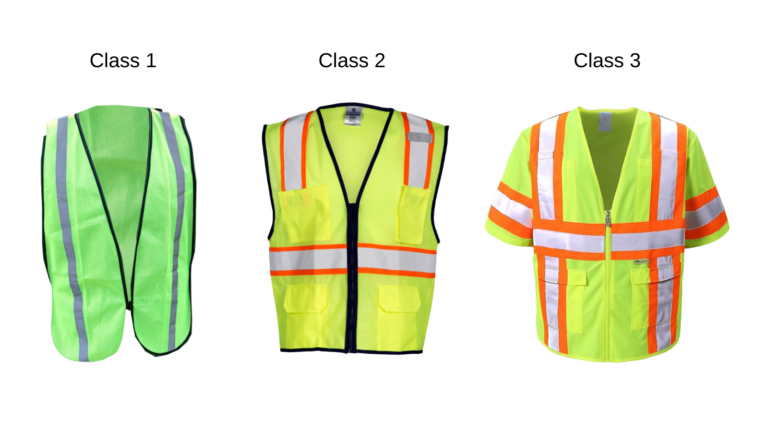
Handy Dandy Safety Gloves
Let’s talk about gloves. Having the correct gloves for the job is instrumental. They should have the dexterity you need to work with your tools, the cut resistance you might need for hazards you’re encountering, and they should fit you properly. There are six different types of safety gloves, and each kind is designed for a specific job. When choosing the correct glove for the job, start by identifying the hazards a job entails and then explore your work safety glove options.
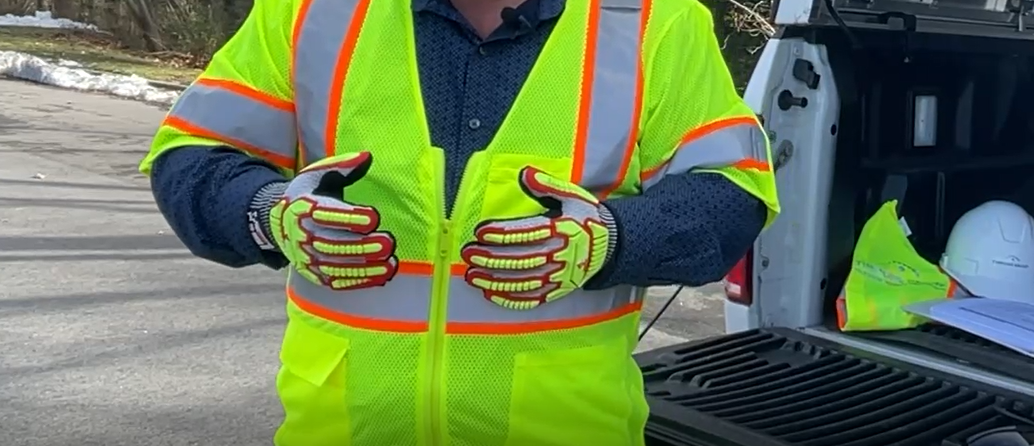
These Boots Were Made for Construction
Lastly, it’s important to have the correct footwear for the job. Our safety professional recommends a safety-toed boot that can be aluminum, steel, or composite, but it must have the OSHA ASTM certification. It should have a sturdy ankle, slip-resistant sole, and a safety cup in the toe. We know that our employees are less likely to encounter injuries when they wear a sturdy boot.
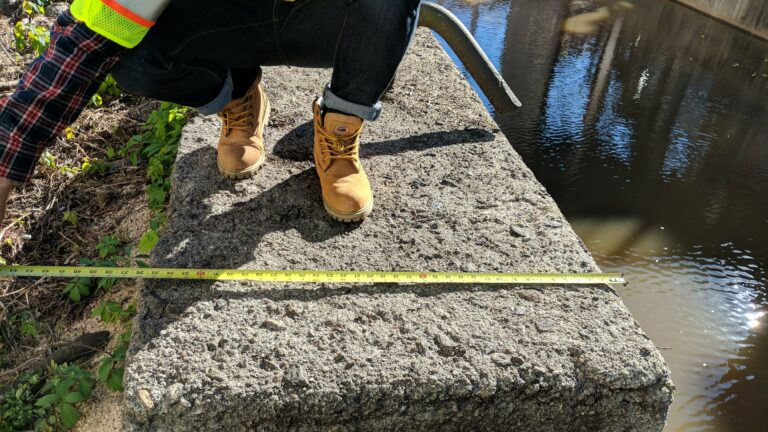
Timmons Group has a responsibility to furnish personal protective equipment to our employees, and we’re proud to follow guidelines to help them stay safe in the field. Besides, a safely and responsibly completed project means a better outcome for both our teams and our clients!
Meet Jim and hear more about his job as our safety manager on our TikTok!




